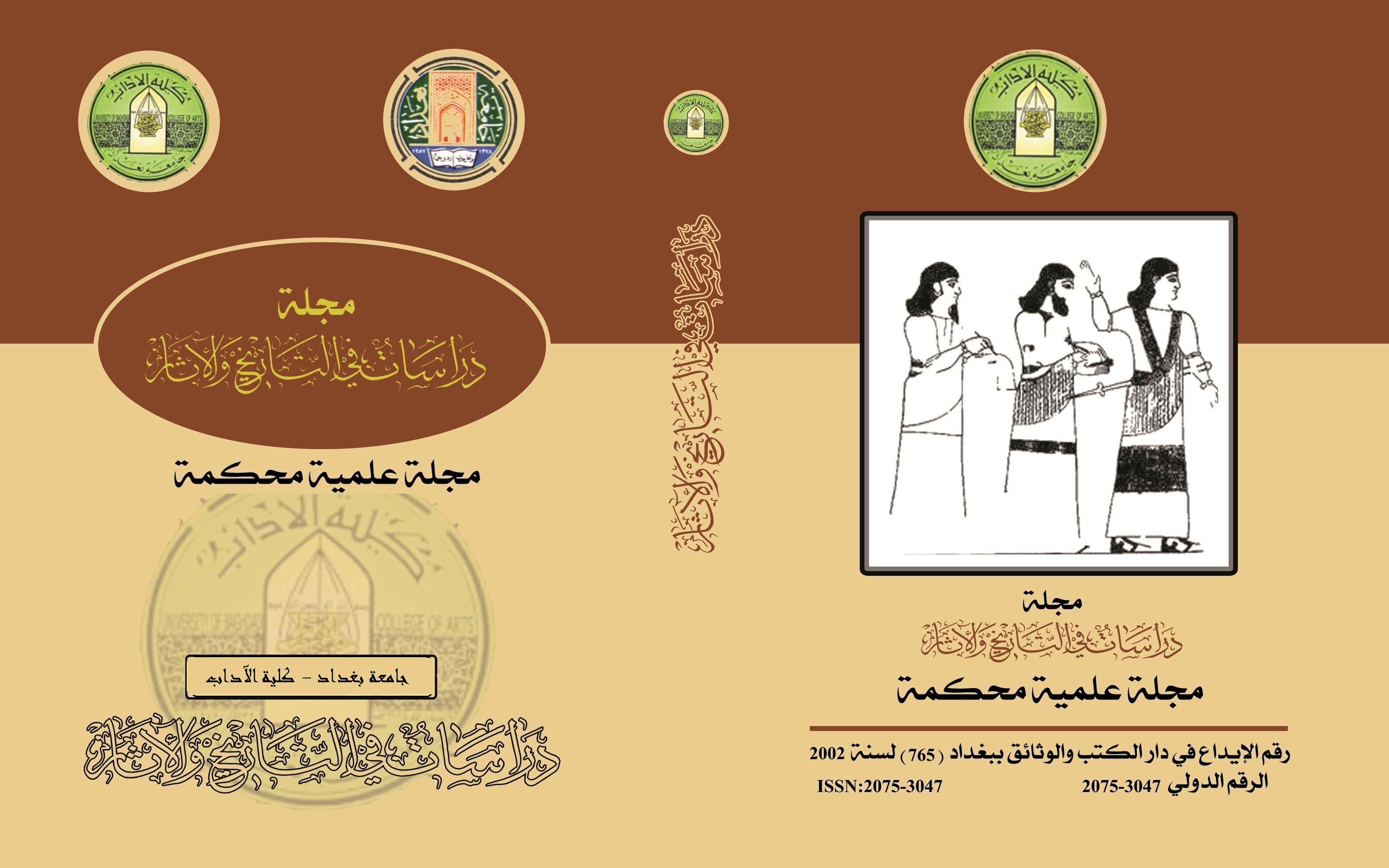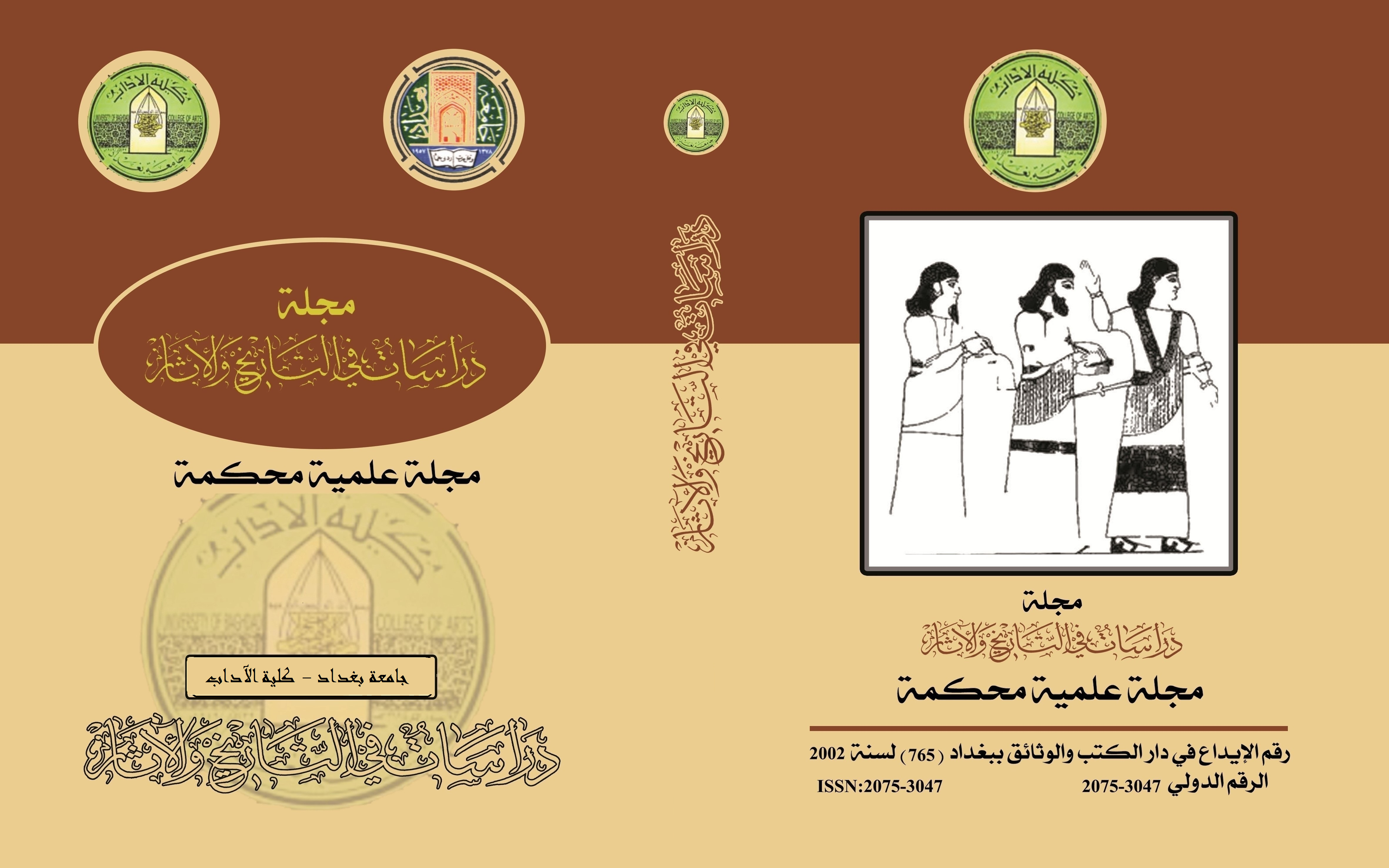دعم عائلة ميديشي لفن عصر النهضة
الكلمات المفتاحية:
عصر النهضة، فلورنسا، ميديشي، الفنالملخص
كان لعائلة ميديشي الدور البارز والفعال في عصر النهضة، لاسيما في فلورنسا التي كانت قبلة فكر النهضة الاوربية خاصة في القرنين الخامس عشر والسادس عشر، أي في اوج قوة عائلة ميديشي، التي بدورها حرصت على رعاية عدة جوانب ثقافية من ابرزها الفن والفنانين، والتركيز على اصحاب الفكر الجديد، أي المبدعين منهم وحرصوا على ان تكون علاقتهم بهم علاقة شخصية، وسخرت تلك العائلة بذكاء الفن لنشر الافكار التي تدعمها، منها نشر الفكر الكلاسيكي عبر تجسيد تلك الافكار فنياً وكذلك نشر وتجسيد بعض الافكار السياسية اهمها نظرية الحكم المطلق.
امتلكت العائلة، في الوقت نفسه، الموارد والقيادة الشخصية لزعمائها لان تكون في المرتبة ان ذلك جلب لهم نقمة الاولى بين العوائل الاوربية دعما للفن والفنانين، رغم ان ذلك التوجه جلب عليهم تربص البابوية كون اغلب تلك الافكار التي تدعمها العائلة، تارة علناً وتارة سراً، محرمة وممنوعة لدى الكنيسة وخاصة فيما يخص الفكر الكلاسيكي والانساني، لكن ذلك لم يمنع العائلة التي لها مصالح اقتصادية كبيرة مع البابوية من الاستمرار في دعمها لتلك الافكار وفنها وفنانيها .
المراجع
اروى خالد علي مصطفى، الاوضاع السياسية في المانيا 887-1106، "مجلة مداد الآداب"، كلية الآداب- الجامعة العراقية، بغداد، مج 12، عدد 27، 2022 .
بيتر وليندا موراي، فن عصر النهضة، ترجمة فخري خليل، المؤسسة العربية للدراسات والنشر، بيروت، 2003 .
جيمس وستفال تومسون واخرون ، حضارة عصر النهضة ،ترجمة: عبد الرحمن زكي، دار النهضة العربية، القاهرة، 1961 .
سلامة موسى ، تاريخ الفنون واشهر الصور، وزارة الثقافة والفنون والتراث ، قطر ، 2015 .
) f. w. kent , Lorenzo de’ Medici and the Art of Magnificence, The Johns Hopkins University Press Baltimore & London , 2004 .
Amanda Lillie, Pazzi family, 2003, Oxford Art Online, Oxford university press, Oxford university, 6/2/2023, https://doi.org/10.1093/gao/9781884446054.article.T065910
Azar M. Rejaie, DEFINING ARTISTIC IDENTITY IN THE FLORENTINE RENAISSANCE: VASARI, EMBEDDED SELF-PORTRAITS, AND THE PATRON’S ROLE, PhD thesis , UNIVERSITY OF PITTSBURGH , FACULTY OF ARTS AND SCIENCES , 2006 .
Christopher Hibbert , FLORENCE THE BIOGRAPHY OF A CITY , Penguin Group , London , 3ed , 2004 .
Claudia Lazzaro, Michelangelo’s Medici Chapel and Its Aftermath: Scattered Bodies and Florentine Identities under the Duchy, ((Journal California Italian Studies)) , UC Berkeley - California Italian Studies , No.6, Vol,1 , 2016 .
Cristina Acidini, I MEDICIE LE ARTI, eDossier i libri di Art e Dossier, Firenze, 2014 ..
Cristina Acidini, Op.Cit, P.8 ; Riccardo Gennaioli, Pregio e bellezza Cammei e intaglio dei Medici, sillabe, Firenze, 2010 .
Franco Cardini and Barbara Frale, La Congiura Potere e vendetta nella Firenze dei Medici, Gius. Laterza & Figli Spa, Bari , Roma , 2017 .
Jacques HEERS, LE CLAN DES MÉDICIS - Comment Florence perdit ses libertés (1200-1500), Perrin, Paris, 2ed, 2012 .
KAJA CAJHEN, Cosimo de' Medici kot mecen–primer palače Medici-Riccardi Zaključna seminarska naloga, UNIVERZA V LJUBLJANI , FILOZOFSKA FAKULTETA, Ljubljana, 2019 .
Lisa Morgan Thieryung , The Palazzo Medici and its Polyvalent Message: Cosimo de Medici Navigates the Shifting Meaning of Pride, Master Thesis, College of Arts and Sciences - University of South Florida, 2017..
Margaret Hayden , The Medicean Example: How Power Creates Art and Art Creates Power , PhD thesis , East Tennessee State University , 2021 .
Michael J. Amy, Lorenzo il Magnifico's Facade for the Cathedral of Florence and Michelangelo's Apostle Statues, with an Addendum on the St. Matthew in 1515 , Peter Lang Verlag, Frankfurt am Main, 2013.
MICHAEL P. KEMLING , MICHELANGELO’S LAST JUDGMENT: THE INFLUECE OF THE LAOCOÖN AND HIS SONS , Master Thesis, University of Georgia , ATHENS, GEORGIA, 2003 .
NICHOLAS J. CUOZZO, MPP,THE FLORENTINE HOUSE OF MEDICI (1389-1743(: POLITICS, PATRONAGE, AND THE USE OF CULTURAL HERITAGE IN SHAPING THE RENAISSANCE, Master's thesis, Graduate School—New Brunswick Rutgers, The State University of New Jersey, 2015.
Paul Robert Walker, The Feud That Sparked the Renaissance How Brunelleschi and Ghiberti Changed the Art World , Harper Collins Publishers Inc., New York, 2002 .
Robert Marvin Knotts , JUDITH IN FLORENTINE RENAISSANCE ART, 1425-1512, PhD thesis , School of The Ohio State University , The Ohio State University , 1995.
Sally A. Struthers , DONATELLO'S PUTTI : THEIR GENESIS, IMPORTANCE, AND INFLUENCE ON QUATTROCENTO SCULPTURE AND PAINTING, Vol.1, PhD thesis , School of the Ohio State University , 1992 .
Salvatore Coppola , “God, Power and Money”Did Cosimo de’Medici Deceive Renaissance Florence? , ((INTERSEDES Revista Electrónica)) , de las Sedes Regionales de la Universidad de Costa Rica , Vol.13 , NO.29, 2013 .
WALTER PATER, THE RENAISSANCE- STUDIES IN ART AND POETRY, Macmillan, London, 6 ed, 1901 .
Wolfgang Lippmann, I Medici nel Quattrocento e nel Cinquecento: I'architettura tra conoscenza e competenza ,dottorato di Ricerca, Universita degli studi Firenze, 2013 .
التنزيلات
منشور
إصدار
القسم
الرخصة

هذا العمل مرخص بموجب Creative Commons Attribution 4.0 International License.
:حقوق الطبع والنشر والترخيص
بالنسبة لجميع البحوث المنشورة في مجلة دراسات في التاريخ والآثار، يحتفظ الباحثون بحقوق النشر. يتم ترخيص البحوث بموجب ترخيص Creative Commons CC BY 4.0 المفتوح ، مما يعني أنه يجوز لأي شخص تنزيل البحث وقراءته مجانًا. بالإضافة إلى ذلك ، يجوز إعادة استخدام البحث واقتباسه شريطة أن يتم الاستشهاد المصدر المنشور الأصلي. تتيح هذه الشروط الاستخدام الأقصى لعمل الباحث وعرضه.
:إعادة إنتاج البحوث المنشورة من الناشرين الآخرين
من الضروري للغاية أن يحصل الباحثون على إذن لإعادة إنتاج أي بحث منشورة (أشكال أو مخططات أو جداول أو أي مقتطفات من نص) لا يدخل في نطاق الملكية العامة أو لا يملكون حقوق نشرها. يجب أن يطلب الباحثون إذنًا من مؤلف حقوق النشر (عادة ما يكون الناشر).
يطلب الإذن في الحالات التالية:
بحوثك الخاصة المنشورة من قِبل ناشرين آخرين ولم تحتفظ بحقوق النشر الخاصة بها.
مقتطفات كبيرة من بحوث أي شخص أو سلسلة من البحوث المنشورة.
استخدم الجداول والرسوم البيانية والمخططات والمخططات والأعمال الفنية إذا لم يتم التعديل عليها.
الصور الفوتوغرافية التي لا تملك حقوق لنشرها.
لا يطلب الإذن في الحالات التالية:
إعادة بناء الجدول الخاص بك مع البيانات المنشورة بالفعل في مكان آخر. يرجى ملاحظة أنه في هذه الحالة يجب عليك ذكر مصدر البيانات في شكل "بيانات من ..." أو "مقتبس من ...".
تعتبر عروض الأسعار القصيرة معقولة الاستخدام العادل ، وبالتالي لا تتطلب إذنًا.
الرسوم البيانية ، الرسوم البيانية ، المخططات ، الأعمال الفنية التي أعاد الباحث رسمها بالكامل والتي تم تغييرها بشكل ملحوظ إلى درجة لا تتطلب الاعتراف.
الحصول على إذن
لتجنب التأخير غير الضروري في عملية النشر ، يجب أن تبدأ في الحصول على أذونات في أقرب وقت ممكن. لا يمكن لمجلة الآداب نشر بحث مقتبس من منشورات أخرى دون إذن.
قد يمنحك مالك حقوق الطبع والنشر تعليمات بشأن شكل الإقرار الواجب اتباعه لتوثيق عمله ؛ بخلاف ذلك ، اتبع النمط: "مستنسخ بإذن من [المؤلف] ، [كتاب / المجلة] ؛ نشره [الناشر] ، [السنة]." في نهاية شرح الجدول ، الشكل أو المخطط.



















